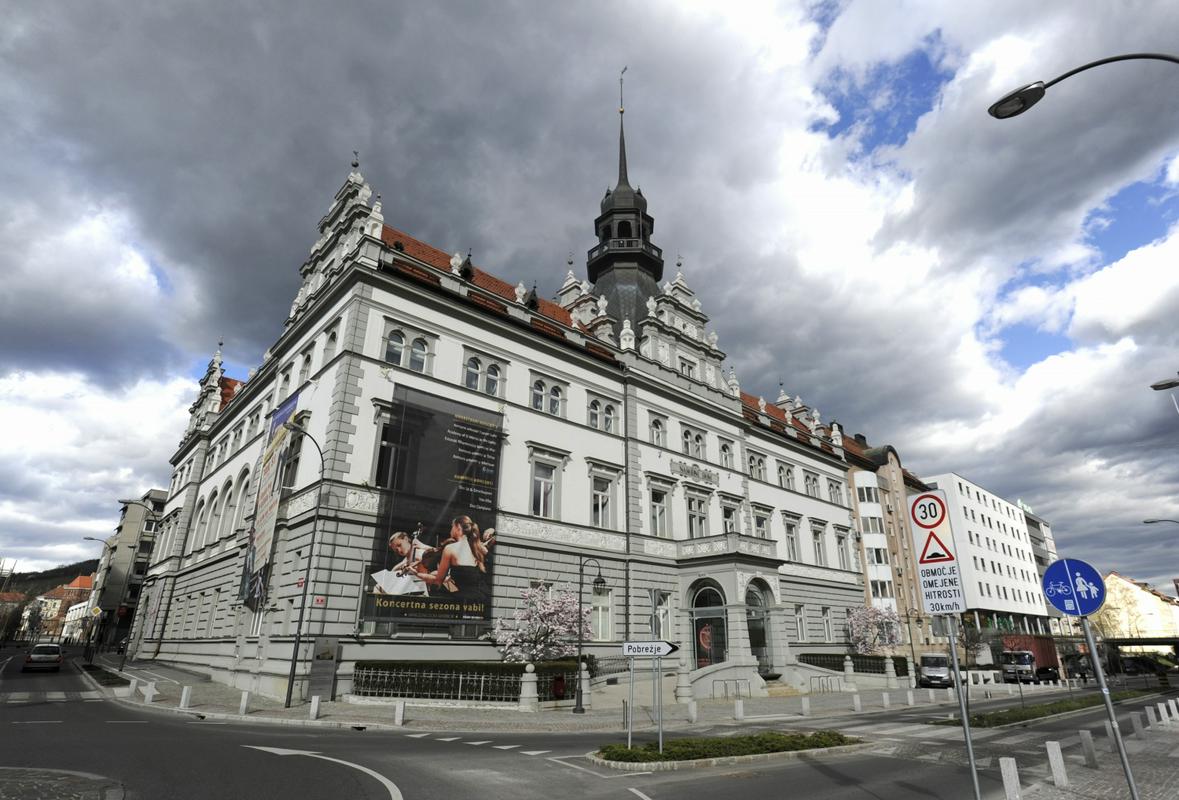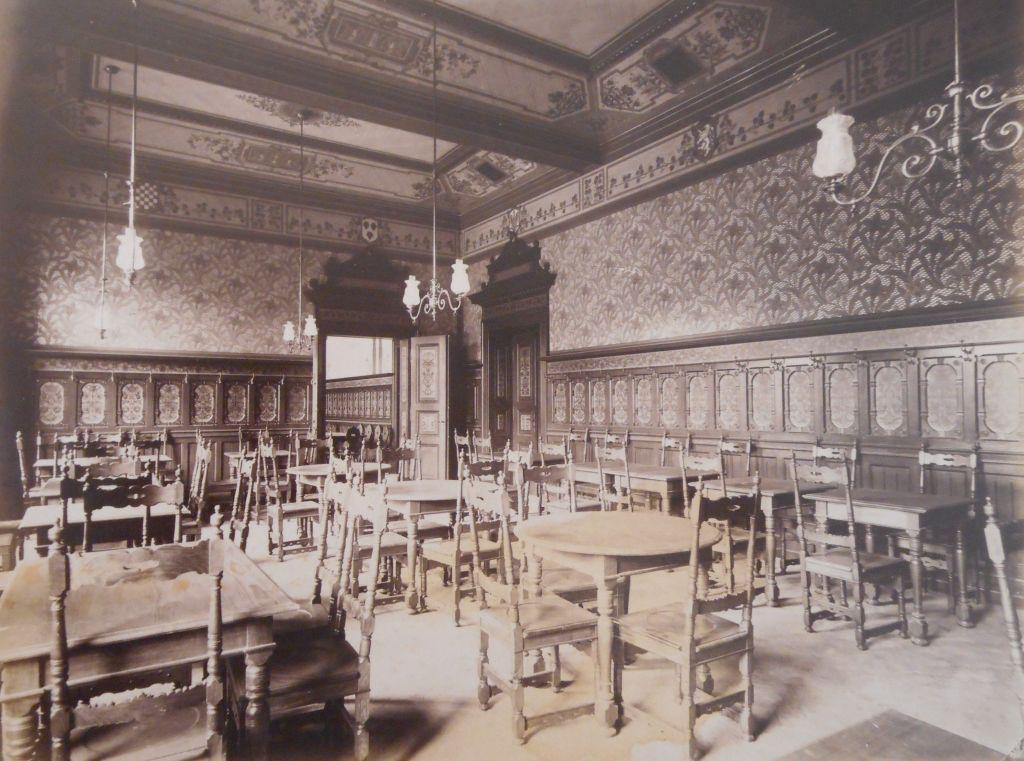

The National Home was opened in 1898. Its primary tenant was a local lending company that needed new facilities. However, much of the building was set aside for cultural institutions, including the regional archives and a Slovenian reading room, which served as an important center of intellectual life at a time when Maribor’s urban culture was still German-dominated. In fact, a German-language cultural center had existed in Maribor for decades before the National Home opened its doors.
The new building featured a large auditorium where dances and other musical events were frequently held. Significantly, it was also a venue for political manifestations a time when the Slovenian Lands were demanding more autonomy within Austria-Hungary. In 1909, a drama society was established in the building, marking the birth of professional Slovenian-language theater in Maribor.
Most cultural activities died down during the World War I, but when the conflict ended, the National Home found itself as ground zero of a historic event. In 1918, Rudolf Maister, a Slovenian general, used the building to organize his forces and devise a daring campaign – a military action that ensured Maribor would join the newly created South Slav state instead of German Austria.
During the interwar years, various institutions were based in the National Home. They ranged from the Slovenian Women’s Society to the Association for Yugoslav-Czechoslovak Friendship. Even a puppet theater found its home in the building.
After World War II, the National Home became the property of the Yugoslav Army, and one of the cultural centers of eastern Slovenia ceased to exist. But in the wake of Slovenia’s independence, it was reestablished under the auspices of the Maribor Municipality.
These days, it houses the famous Lent Music Festival, various theater companies, a youth musical association, a gallery, a bookstore, and a café. As it has been since the 19th century, the National Home is once again a part of the cultural fabric in Slovenia’s second city.


































































